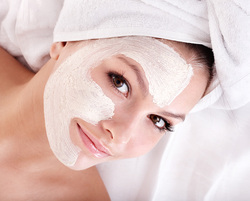
The different reasons behind uneven skin tone may vary considerably. It is often anything from sun exposure to something more serious like vitiligo. Before you dive into what the certain causes for uneven skin tone are, you must know what factors into skin tone normally.
Melanin
Melanin is a pigment located in the skin which is accountable for giving our skin color. The amount of color released in healthy skin is principally driven by genetics and secondly by UV rays from sun exposure. Too much production of melanin, because of excessive sun exposure, hormones, or scarring, oftentimes triggers the physical appearance of uneven skin tone.
Pigmentation Disorders
There are two distinctive variations of pigmentation (or skin coloring) disorders. Hyper-pigmentation takes place when excessive amounts of melanin is developed, causing brown or dark patches of skin to form. Hypo-pigmentation occurs when insufficent melanin is released, usually resulting in the loss of skin color.
Melasma
Melasma is one of the most common varieties of hyper-pigmentation. It ordinarily shows up as little dark patches of skin on the face. Melasma is particularly common to see in pregnant women as a result of hormones. It is also common in men and women of German/Russian and Jewish ancestry. Skin discoloration, or melasma, does not generally have any other side-effects.
Vitiligo
Vitiligo, a form of hypo-pigmentation, appears when the melanocytes, the cells responsible for producing melanin, die or are incapable of forming melanin. Vitiligo’s source is right now unknown, but a lot of doctors have linked it with autoimmune disorders. It is characterized by blotchy areas of depigmentation (no color) often on the face, hands, and wrists. Vitiligo is taken care of in several different ways. The commonest include, immunomodulator creams, vitamin supplements, skin bleaching creams, and UV light therapies.
Age Spots
Age spots, often called liver spots, are darkened patches on the skin commonly related with aging and sun exposure. As the body ages the skin is far less able to recover from sun exposure. That is why age spots come out more typically in elderly people and adults. Though age spots pose no threat to the health, they are normally considered unattractive.
Post-Inflammatory Hyperpigmentation (PIH)
Post-Inflammatory Hyperpigmentation, or PIH, is indicated by dark or red spots frequently left behind after acne lesions have healed. PIH is more common in people of African, Asian, or Hispanic heritage. While PIH is normally not irreversible or detrimental to the health, it often is thought of undesirable and can as a result produce mental distress.
Oily Skin
People with especially oily skin are at more risk for uneven skin tone. The oil, or sebum, on your skin will likely cause the dead skin to congeal. and cling to your skin instead of flake away. This can ultimately result in the appearance of uneven skin tone. This can easily be fixed with soaps and exfoliating.
For more information on uneven skin tone please visit The Uneven Skin Tone Information Center.
